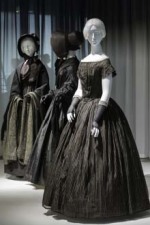Greetings all you beautiful bodies out there! Stephanie the Decayed Maid is gonna lay it down hard on ya, this time. This week, we are going to go deep into the catacombs and pull out something of note that has been given the stamp of approval by the Criterion Collection.
EYES WITHOUT A FACE
Available On: Hulu Plus
Yeah, we’re goin’ old school this week.
Debuting in Paris in 1960, Eyes Without A Face, or “Les yeux sans visage,” is a French-Italian horror movie by Georges Franju, adapted from the novel of the same name. Starring Pierre Brasseur and Alida Valli, what was once somewhat a misunderstood movie presented to audiences as just another creature feature became what many believe is one of the most cinematically influential movies of all time, earning a place in the acclaimed Criterion Collection.
Eyes Without A Face follows surgeon Dr. Genessier and his assistant Louise on the journey to save his daughter Christiane from what he feels is a fate worse than death. After a horrible car crash leaves his daughter horribly disfigured, Genessier and Louise prey upon the streets of Paris, trying to find a beautiful woman that they can murder in order to graft her face onto Christiane’s. Until that time, the professor forces Christiane to wear a smooth, featureless mask to hide her disifugrement, and declares her dead to the authorities.
Christiane’s fiance, Jacques, begins to receive strange phone calls from Christiane, who quickly hangs up after hearing his voice. When she finally does say his name on one of the calls, it is interrupted by Louise, and Jacques, now certain Christiane is alive, sets about contacting the police. The authorities have been following a string of disappearances of young woman with blur eyes and after Jacques identifies Louise as the woman last seen with them, the police enlist the help of a woman named Paulette to gain access to Genessier’s clinic and end this once and for all.
Franju was plagued by European censors while making this movie. French censors found blood upsetting, British censors found animal torture upsetting, and German censors found mad scientists upsetting; the movie featured all three. That set Franju on the hunt for the perfect balance and tone to the film, centering the story on what originally was the doctor on that of his daughter, giving Genessier a more loving depiction and making the story slightly easier to stomach.
The movie had a hard time finding its way, most audiences shocked by the heterograft scenes in which the faces were removed, and was often misunderstood in its tone and cinematography. By the time it was released in the United States, it was paired with the sci-fi horror flick The Manster, and had been heavily edited under the name The Horror Chamber of Dr. Faustus. The two films were truly night and day from each other, with “Dr. Faustus” being a study in terror in strangers and The Manster having a focus on its idea of a two-headed monster with a carnie-show flair. It wasn’t until its re-release in 1986 that audiences and critics began to appreciate it, hearkening it to poetic and even fairytale-like. The ending tableau is still one of the most beautiful images put on film to date.
I was exposed to this film in college in a horror film studies class. It was the only film worth watching that we observed, (The teacher picked Freddy’s Dead: The Final Nightmare out of the entire Elm Street series to show us, I mean really?) and as I had never seen it I was completely enchanted. I have seen many horror films from the 50’s and 60’s but none as quiet, simple, and disturbing as this one. Each character is fully realized, something that horror movies can often easily overlook, especially in their villains. In the end it has a strangely inspiring message, that being to love yourself for who you are, and not bring pain to others in order to further oneself or to recreate the past.
It’s so easy in a horror film to just put in musical stings and jump scares, to make the villain a mindless maniac or cold sociopath. But with Eyes Without A Face, you are met with characters who are doing things with real intent, and with true emotional necessity. Although what Genessier is doing is unconscionable, he is sacrificing his career and the lives of these women for what he feels is the most noble of causes – that being his daughter. Louise seems driven by her desire for Genessier, and for his approval. Christiane feels helpless and inadequate due to her deformity and her fragile treatment by her father, before standing up for what she believes to be morally right. This is what separates the wheat from the chafe with this movie, as opposed to most horror films of the time.
NAILS IN THE COFFIN: 9/10
Normally I don’t trumpet subtitled movies because I know it immediately turns many people off. But I ensure you, this 90 minutes of French cinema is worth the eye strain you think you may get. It is unlike a typical European film, giving you a strange sensation of the calm before a storm. The breathtaking images created by cinematographer Eugen Schufftan along with the simple design of Christiane’s mask are nothing short of stunning. Her porcelain face brought to life by Edith Scob’s performance has you waiting for her mask to suddenly animate, or you forget that the mask is even there thanks to Scob’s emotional portrayal. And if for no other reason, the end to Eyes Without A Face is something legendary, that is a must for anyone that enjoys quality films.





